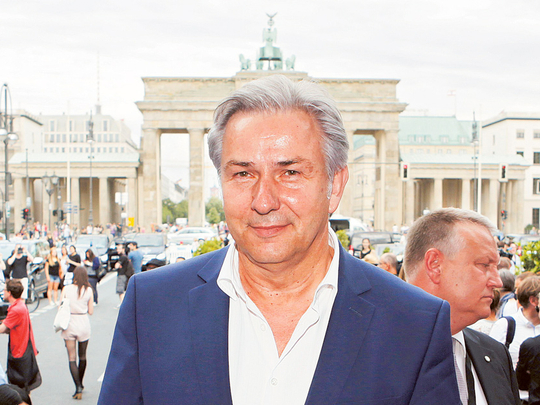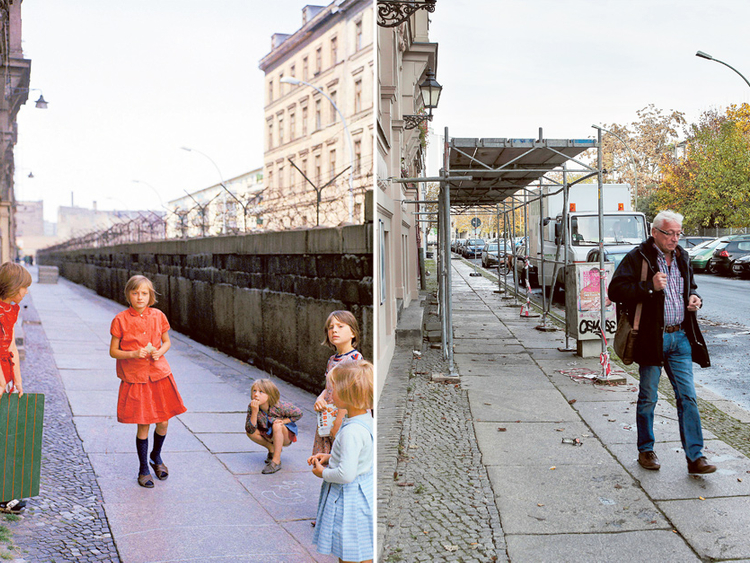
Dubai: The city of Berlin has a combative spirit. A never-say-die attitude, coupled with the will to prevail against the sternest of odds. These characteristics have been represented through various moments in European and world history, ancient and contemporary.
Berlin showcases the essence of the German spirit — ambition, progress, discovery and an ability to constantly rise above the limits set by others and by itself.
An expanse of land that started out as a market place in the early 13 century is now one of the most celebrated capital cities in the world and the hub of the European continent painting deep strokes over a broad canvas that is propped up by political, social, cultural and economic platforms.
In the context of portraying a comprehensive impression of this city to the rest of the world Klaus Wowereit, the Governing Mayor of Berlin, has a rather extensive portfolio.
Wowereit oversees, among many other tasks, the celebrations of the 25th anniversary of the Fall of the Berlin Wall. It will be one of his final official duties before he leaves office in December. The event bears as much significance for him today as it did when he watched the Berlin Wall being torn down on November 9, 1989 and two countries eventually became one. Wowereit has served in office for 12 years.
“In that regard, this occasion is of course a chance to look back and see how the city has changed in the last 25 years,” Wowereit told Gulf News. “It’s also a chance for me to take stock personally, since I’ve been able to help shape the city’s development as Governing Mayor for half of that time.”
Through the extensive road that Berlin has travelled, in the 777th year of its history, nothing has been so significant for Wowereit as the moment when he stood near the wall, as a young councillor in the Tempelhof borough of the city, and watched it being torn down. The people, from what was essentially two separate countries, with differing ideologies, moulded to try and become one in an attempt to wipe out the decades of hurt, anger, violence and separation.
“No one who was in Berlin at that time will ever forget the days and weeks after the fall of the Wall. I was already a politician, and yet I could never have imagined how this story would turn out for me personally,” endorsed Wowereit.
Unification brought its own unique glitches. There was no prescribed formula for seeking the right solutions. Berlin, by virtue of the influence it exerted across the two countries that became one and throughout the expanse of Europe, slowly began to evolve and fashion a character of its own. Reunification has brought with it a new beginning. The city was forced to take up the challenge and attain new landmarks in a bid to justify the reunion of two countries.
It was in keeping with the modern vibrant personality that Berlin exudes today. Berlin’s character has been forged by a tumultuous history documented across every street, building, wall and home that has stood the test of time right through the relentless bombing it was subjected to by allied forces, till the humiliating moment of its separation and surrender to the forces of communism and capitalism, the tensions of the Cold War era and eventually the reunion of a country and a city.
Recalling those days Wowereit said, “Berlin played an important role during the Cold War and, with its story, made a significant contribution to the reunification of Europe.
“It was a big challenge just to bring people with different backgrounds, who had been socialised in completely different systems, together in a unified Berlin. And apart from that, it was a difficult task — economically, politically, financially — to make a modern metropolis out of formerly divided Berlin. The face of the city has changed in the last 25 years; it’s become more open to the world, more diverse, and more colourful.
“There are hundreds of thousands of success stories about people who were able to use the new freedom and unity to change their lives for the better. From that point of view, it was and remains a stroke of good luck for the citizens of the city.”
Though modern historians have recorded the observation that the former East Germany is still lagging behind, 25 years after the Berlin Wall came down, Berlin has gone from strength to strength, bolstering the argument that reunification has offered hope to all, especially those from East Germany.
Wowereit lists the catalyst that drives this city forward, “Berlin is Germany’s start-up capital. Young people come to Berlin to put their ideas into action. Things are looking up. The city is growing. We are optimistic about the future. Berlin is a trendsetter in electromobility and mobility concepts of the future. Our vision is the ‘smart city’: linking all of these advantages with the opportunities opened up by digitisation and the internet.
“And — Berlin’s range of cultural offerings is one of the most attractive in the world. We’re setting one tourism record after another. It is a cosmopolitan city where people from 180 different countries live together.”
The events in the past have always acted as a red flag to the inhabitants of this city reminding that nothing comes easily. Despite 25 years of reunification Germany is still a work in progress. Berlin operates in parallel, keeping up its end of the bargain and promise made to all Germans, irrespective from which part of the border they come from.
‘We will have to work hard in the future, too, to maintain our success,’ endorsed Wowereit. ‘There is tough competition between regions and metropolises. I’m proud of what we’ve achieved, but we can’t relax our efforts.’













